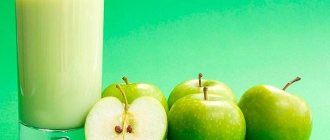Fletcherism is a method of medicinal chewing.
The benefits of thoroughly chewing food have long been known in the East. Yogis claim that digestion (and even the absorption of energy from food) begins in the oral cavity, and food is well absorbed by the body only if it is well crushed during chewing and abundantly moistened with saliva. Many people remember the famous yogic motto: “Eat liquid food, drink solid food.” This means that even liquid food (juices, decoctions, milk, etc.) must be chewed in the mouth, mixed with saliva
. And solid food needs to be chewed longer than usual, turning it into liquid. Yogis chew each piece 100-200 times, and for good reason: an experienced yogi can be completely satisfied with one banana or a crust of bread. It has been noticed that overweight people tend to eat too quickly. In this case, the saturation center in the brain does not have time to turn on. This usually takes 25-30 minutes. And no matter how much you eat in these minutes, true satiation will come later, so it’s hardly worth rushing. Active chewing improves blood supply to the brain, heals the nasopharynx and gums, protects teeth from caries (saliva neutralizes the acid and sugar of food. For more efficient functioning of the gastrointestinal tract, it is also useful to train the abdominal muscles, as yogis do. Squat down in a cat pose (bidalasana. In this pose, you can feel the movement of the abdominal muscles well. Exhale, gently pull your stomach, as if trying to bring your navel closer to the spine, release with an inhalation. Repeat 10 times, spending about 1 second on each movement. After a short rest, repeat. In total, do 3 series of such movements . Sitting in a cross-legged position, lean forward, resting your hands on your knees. As you exhale, strongly pull up the front wall of your abdomen. While the natural breath-hold lasts, repeat the pull-up up to 10 times. As soon as you feel the urge to inhale, immediately release your stomach. This exercise is only performed on an empty stomach. Tightening the abdomen is a powerful way to improve digestion and improve the health of internal organs, so try to do it regularly. Method of therapeutic (thorough) chewing by R. G. Shavkunov. Chewing food for a long time is the path to healing the gastrointestinal tract and the whole body. He used the method of medicinal chewing in Akademgorodok near Novosibirsk, where he led a health group. The effect was amazing - 200 people forgot about their illnesses, became healthy and ran 10 km every day, and 50 people ran an ultra-marathon: 250 km, 50 km a day. Naturally, great interest arose in understanding those patterns and mechanisms of the human body that help awaken such great possibilities. The proposed system of long-term medicinal chewing has been tested on ourselves and others more than once over the course of 12 years. She always gave the expected positive results. How do we usually eat? We never think about this. For us, the main factor is time. We have no time to eat, we have no time to eat. In the morning we are late, grab a piece of bread or something else and gobble it up as we go. Lunch 40-50 minutes: you need to talk, relax, play chess, dominoes, but not food. She walks parallel, on the move. Within 5-10 minutes we were full. What we eat is something tastier and faster, that is, food has become a true pleasure for us, even a pastime. Or it could be different. We can sit at the table for hours, devouring countless amounts of food and, worst of all, we enjoy it. We forget that we have to pay for this, sometimes cruelly: 3/4 of the stomach is cut off, pancreatitis, cholecystitis and many other diseases. All living things in nature (except modern humans) treat the process of digestion with great attention, trying to get from this process everything that is inherent in nature. Modern medicine defines digestion as a physiological process, as a result of which food entering the digestive tract is processed (mechanically and chemically), which is necessary for its absorption by the body. Proteins, fats and carbohydrates contained in food can be absorbed only after breaking down into simpler chemical compounds. The breakdown of these nutrients occurs in the digestive tract with the participation of accelerators of chemical reactions - biological catalysts or enzymes that are produced by the cells of the digestive glands (salivary, gastric, pancreatic, intestinal) and are part of the juices secreted by these glands into the lumen of the digestive tract. Subsequent absorption of the broken down products and their transportation within the body ensure their supply to the cells in need. Works and. P. Pavlov established the following: The work of the digestive glands is controlled by the nervous system. The amount of secreted juices, their composition and properties depend on the composition of the food and other conditions (for example, mood. All parts of the digestive apparatus work in concert, interacting with each other. The work of the digestive glands changes when moving from one food regime to another. Food processing occurs during prolonged chewing as follows: Food crushed by teeth interacts with secreted saliva and chemo-receptors of the oral cavity, which send information about the chemical composition of food to the brain, from where, in turn, information is received about the necessary correction of the chemical composition of saliva to create the best conditions for its further processing and absorption. Part of the food taken into the mouth, processed by saliva, is absorbed into the blood directly in the oral cavity. This makes it possible to process a significant part of the carbohydrate component, most quickly satisfy part of the nutritional needs of the body's cells, eliminate overeating and create the most favorable conditions for processing food in the stomach, duodenum, small and large intestines. In this case, the carbohydrate component (bread, porridge, potatoes) is processed mainly in the mouth and duodenum, and the protein component (legumes) is processed in the stomach. The most favorable conditions are created for separate digestion and the most complete absorption of proteins, carbohydrates and other nutrients supplied with food. We get a feeling of being full with food much faster with 2-4 times less food consumption. Energy costs for food processing are significantly reduced, and the saved energy is used by the body to restore and heal all parts of the gastrointestinal tract. And all this can be obtained after a 5-week cycle of long-term medicinal chewing according to the following scheme. Therapeutic chewing scheme. - The first week - each spoon of food placed in the mouth (breakfast, lunch, dinner) is chewed for one minute. - Second week - two minutes. - Third week - three minutes. - Fourth - two minutes. - Fifth - one minute. Chewing is ideal: one chew for each existing tooth and three for each missing tooth. As a result, a conditioned reflex is formed to chew food for a long time (30-40 seconds. As experience shows, long-term therapeutic chewing cures almost all diseases, since during chewing all body systems are included in this process: digestive, nervous, endocrine and others. First of all diseases of the gastrointestinal tract are treated: stomach ulcers, gastritis, duodenitis, pancreatitis and even diabetes. The work of the esophagus is normalized (its diverticula are eliminated) and the large intestine. The liver is cleansed, nervous diseases and diseases of the thyroid gland, appendicitis are treated. At the same time, the process of weight normalization occurs : in five weeks, excess weight is reduced by 5-10 kg, and underweight returns to normal. Metabolism is normalized. Source: VK - vegetarians. Vegans. Raw foodists. Fruit eaters.
Chapter I How I became a fletcher
My Turning Point – How I Ignored My Responsibility – What Happens While Chewing – The Four Principles of Fletcherism
More than twenty years ago, at the age of forty, my hair was white, I weighed two hundred and seventeen pounds[1], which is about fifty pounds[2] more than I should weigh for my height of five feet six inches[3]. In addition, every six months or so, I would get a bad "flu", suffer from indigestion, and constantly "feel tired". I was an old man at forty, on my way to a quick demise.
Around this time, I applied for a life insurance policy that was “rejected” by experts as being “high risk.” This was the last straw. I had no fear of death. I learned long ago to treat death with equanimity. At the same time, I had a passionate desire to live and I immediately decided to find out what the reason was and, if I could, then save myself from the threat of death.
I realized that the first thing I had to do was close all my affairs if possible so that I could devote myself to learning how to live for a few more years. This, as I understood, can be done and I left active business.
My greatest desire was to live in Japan, where I lived for several years and it was to this country that I was passionately devoted. My tastes were directed towards Japanese fine art. Japan has been my Mecca for many years. All my household things were already there, waiting for me to move to Japan permanently. It took enormous willpower to give up my lifelong dream to continue traveling the world and focus on finding a way to stay alive. I turned my back on Japan and began my search for ways to regain my health. For a while I took the most famous “medicines” in the world. There were sparks of hope here and there, but in the end I was disappointed.
MY TURNING POINT
Partly by accident, and partly as a result of searching, I finally found the key to solving my health problems. A few years earlier, one of the solutions I had found to possibly stopping the decline was in Galveston, Texas. It was reinforced by my visit to a gourmet philosopher who owned a snipe estate in the swamps of South Louisiana and a truffle reserve near the Po River in France. He was a disciple of Gladstone and closely followed the rules of thorough chewing that the Grand Old Man of England had formulated as a guide for his children. A friend of mine from Louisiana wrote to me that his good health comes from avoiding overeating and exercising in his favorite sport. But these impressions were not enough for me to have a lasting effect on me.
However, one day I was called to Chicago to take care of unfinished business. They were difficult to resolve quickly and I was forced to “kill time” in this western city without doing much. It was at this time, in 1898, that I began to think seriously about the process of eating food and its effect on health. I have read so many books, only to realize that not even two authors hold similar views. Based on this fact, I argued that no one had actually discovered the truth, otherwise there would have been some consensus of opinion. So I stopped reading and decided to consult Mother Nature to determine the future direction of my efforts.
HOW I IGNORED MY RESPONSIBILITY
I started by trying to figure out why nature wants us to eat and how we eat and when we eat. The key to my quest was a strong belief in nature's good intentions for our health and happiness. And also the belief that anything less than good health and high performance were due only to the violation of some good and beneficial laws of nature. Therefore, it was simply a matter of finding the essence of these violations. Obviously, the only mistakes were somewhere in nutrition.
I argued that if nature has placed personal responsibility on us, then it is not hidden in the dark folds and convolutions of the digestive tract, from where we cannot control digestion. The error or errors must be corrected before the food is swallowed. I instinctively felt that this was the key to the whole situation. So, first of all, it was about studying the oral cavity and the first thought was: “What's going on in there?” and “What is there?” The answer was: there is taste, smell (close to taste and it is difficult to distinguish it from taste), sensations, saliva, chewing, appetite, tongue, teeth, etc.
First of all, I began a thorough study of taste, since food needs to be kept in the mouth for as long as possible in order to understand the source and development of taste in the oral cavity. I tried to do this myself and discovered the wonders of new and pleasant sensations. I also discovered new pleasures in the sense of taste. The appetite took a new direction. Then an important discovery occurred, namely, I discovered that each of us has what I call a food filter - a separating muscular gate located in the back of the mouth, where the pharynx is separated from the mouth during the chewing process. Where the very base of the tongue is located, there are usually five (sometimes seven, as we are told) small horseshoe-shaped tubercles, similar to nipples, and around each of these tubercles there is a groove. These grooves or depressions contain a large number of taste buds or taste nerve endings. Just above this place of the tongue, the upper part of the oral cavity or “hard palate” ends and the “soft palate” begins with a uvula at the end, which descends behind the base of the tongue.
During the natural act of chewing, the lips are compressed and, in addition, the back of the oral cavity is completely closed by pressing the tongue against the roof of the mouth. So, during chewing, the mouth is a sealed bag. After this brief description, the next time you eat, pay attention to:
WHAT HAPPENS DURING CHEWING
Bend your head, keeping your face down so that your tongue hangs perpendicularly down in your mouth. This is done for two reasons: firstly, because it will show how food, when properly mixed with saliva, despite the force of gravity, rises up the trough in the middle part of the tongue and accumulates at the closure site at the back of the mouth, i.e. food gate.
This is the real gate - while the food is chewed, mixed with saliva, undergoes chemical transformation, transformed from its original state into a chemical form that makes it possible to digest and absorb it, this gate will remain tightly closed and the throat will be completely cut off from the oral cavity.
Food, when mixed with saliva, becomes creamed, or emulsified, or alkalized, or neutralized, or dextrinized, or modified into whatever form nature requires. The creamy substance will rise up the central groove of the tongue until it reaches the food gate.
If the taste buds located around the “surrounding papillae” (the papillary-like projections on the tongue that I talked about above) detect that the food has already been properly prepared for absorption and further digestion, then the food gate opens. Food that is ready to be taken into the human body will be absorbed and swallowed unconsciously, that is, without conscious effort.
Now I started experimenting on myself. I chewed the food thoroughly until I extracted all the flavor that was in it and until the food unconsciously slipped into my throat. When the appetite subsided, I told myself that I would stop eating. I stopped eating because I had no desire to continue eating until I again felt a real appetite that told me to eat again. I ate again, chewed my food thoroughly, and always ate what my appetite demanded.
FIVE PRINCIPLES OF FLETCHERISM
I created five principles and everything in my discovery regarding optimal nutrition and related to the fundamental requirements is called Fletcherism.
First:
Wait until you have a true, “earned” appetite.
Second:
Choose from the available food those foods that suit your appetite best and eat them in the order your appetite requires.
Third:
Feel and suck out all the good taste that is present in the food in your mouth and swallow the food only when it practically “swallows itself.”
Fourth:
Enjoy as much as possible all the pleasant tastes from food and at this moment do not allow any depressing or distracting thoughts to intrude on this process.
Fifth:
Wait a little, take another product that your appetite wants and also
enjoy it as much as possible
. Nature will do the rest.
For five months I carefully monitored my condition. I worked on the issue of my saliva secretion and found changes in a positive direction. I lost over 60 pounds[4] of fat and felt better in every way than I had in twenty years. My head was clear, my body was elastic, I liked to walk, in five months I didn’t catch a cold even once, the “feeling tired” disappeared! But my skin has not yet tightened up again to match my reduced size. When I told the friends I was dating that I felt good, essentially a new person, their response was that I certainly "didn't look any better!" [A]
[A] NOTE: Some of these friends of mine, when I was already sixty-four years old, positively stated: “You never looked so good. Fletcherism definitely helped Fletcher!”
The more I tried to convince others, the more I realized that talking to friends about this was an almost hopeless attempt. It was futile to think that they would trust and sympathize with my views, as I understood them - scientifically based. This was the case for several years. I came face to face with the fact that campaigning for recognition of my knowledge meant spending a lot of money, postponing opportunities for profit in other, more pleasant ways, and, in addition, being endlessly ridiculed. Sometimes, when I "assessed" a situation in my head and treated it calmly, like a business, it seemed crazy to me to spend more time or money trying to prove the correctness of my ideas.
It took three whole years before I received support from several recognized authorities. I first approached Professor Atwater [B], who received me very politely, but when I told him my story, he gave my enthusiasm a cold shower. Subsequently, in our correspondence he was very cordial, but in no way reassuring.
[B] NOTE: Professor W. A. Atwater of Connecticut, USA, was at one time a respected authority on human nutrition and, as such, was selected by the editors of Encyclopædia Britannica as the author to write the chapter on nutrition for the encyclopedia.
The situation was definitely getting worse. But I continued to persist. Finally, I had my first follower - a doctor, but himself sick and disappointed, from a family long known in the medical profession. It was Dr. Van Someren, from Venice, Italy, where I bought a house and lived for several years. I asked him to organize an experiment with me. We recruited a group of men and invited them to eat according to my ideas. We were also lucky because Professor Leonardi from Venice began to collaborate with us.
In less than three weeks the ailing doctor was relieved of his acute ailments and it would have taken several teams of horses to keep him from preaching his discovery. [C]
[C] NOTE: The words of Dr. Van Someren are given in the Appendix to this book, taken from the book “The ABC of Our Own Nutrition”.
A little later, we moved the experimental field to the Austrian Tyrol, where we tested such a parameter as our endurance. It turned out that our performance was absolutely incredible. Dr. Van Someren then wrote his paper for the British Medical Association, which aroused the interest of Professor Sir Michael Foster of the University of Cambridge, England, and the first wave of scientific attention began.
Therapeutic chewing according to Fletcher. Therapeutic chewing for weight loss

Chewing thoroughly means preventing contamination of the body from the inside, which, accordingly, leads to weight loss. Secondly, we often eat not because of real hunger, but to enjoy the taste of food. Our brain is responsible for the feeling of fullness. When hastily absorbing food, taste buds, along with the corresponding sensory areas of the brain, do not have time to engage in the process.

That’s why our brain doesn’t catch up with the fact that it’s time to finish the meal, which is why we continue to hamster both cheeks, often eating too much and, consequently, gaining weight.
One of the reasons for excess weight is insufficient chewing of food.
If you chew many times, saturation occurs faster and we do not overeat. With prolonged chewing, the amount of food absorbed is reduced, that is, less of it is needed to achieve a feeling of fullness.
It has been established that the feeling of fullness comes after 20-30 minutes. Therefore, you can at least overeat in 10-15 minutes, but this will not get rid of the feeling of hunger. With careful chewing, this does not happen - eating, as they say, with feeling, with sense, with arrangement, we do not want to eat too much.
Therapeutic chewing is the most basic and easy-to-use diet, which is highly effective; moreover, medicinal chewing heals our body and leads to longevity.
A large study was conducted in Japan. Scientists divided 5 thousand volunteers into groups depending on chewing speed. There were five groups: “fast”, “quite fast”, “regular”, “quite slow”, “slow”. Based on observations of volunteers, scientists came up with a formula: chew quickly - you get fat (plus 2 kg), slowly - you lose weight (minus 3 kg). The results speak for themselves.
Another study conducted by specialists at Harbin Medical University and published in the American Journal of Clinical Nutrition showed that when a person chews food 40 times instead of 10-15 times, the caloric content of his diet decreases by 12%.
That is, reducing calories by thoroughly chewing food is a fairly effective way to lose weight. Brilliant - simple!
Therapeutic chewing forum. The medicinal chewing scheme will be difficult, but possible.
I found what I needed... it may be useful to you too: Therapeutic chewing scheme
The first week - every spoonful of food put into the mouth (breakfast, lunch, dinner),
Chews for ONE minute.
Second week - TWO minutes.
Third week - THREE minutes.
Fourth - TWO minutes.
Fifth - ONE minute.
Chewing is ideal: one chew for each existing tooth and three for each missing tooth. As a result, a conditioned reflex is formed to chew food for a long time (30–40 seconds).
Experience shows that long-term medicinal chewing cures almost all diseases, since during chewing all body systems are included in this process: digestive, nervous, endocrine and others. First of all, diseases of the gastrointestinal tract are treated: stomach ulcers, gastritis, duodenitis, pancreatitis and even diabetes. The functioning of the esophagus is normalized (its diverticula are eliminated) and the large intestine. The liver is cleansed, nervous diseases and diseases of the thyroid gland, appendicitis are treated. At the same time, the process of weight normalization occurs: in five weeks, excess weight is reduced by 5-10 kg, and underweight returns to normal. Metabolism is normalized. Therapeutic chewing is available to everyone and does not require medical supervision.
Therapeutic chewing is a process of separate nutrition in its purest form, since any food consisting of proteins, fats and carbohydrates is digested separately: its carbohydrates are digested in the mouth and small intestine, and its protein components are digested in the stomach.
The body smoothly and gradually, with the usual diet, normalizes all systems of the gastrointestinal tract and restores the natural capabilities of the immune system without disturbing the body’s established system of biorhythms.
Therapeutic chewing requires the least amount of energy to restore body systems compared to other methods. Therefore, the resulting savings in the body’s energy allow the greatest of its restoration capabilities to be realized.
The health of the entire body and its systems is ensured: digestive, nervous, immune and others.
A significant reduction in food consumption (2-4 times) prevents the appearance of excess weight after a course of therapeutic chewing, reduces food costs, reduces the amount of toxins formed in the body, facilitating the functioning of the excretory systems, promoting their health.
A conditioned reflex is naturally developed - the habit of prolonged chewing after the end of the treatment cycle, which can persist for years with occasional repetition of the therapeutic chewing cycle. This method, combined with any type of fasting, gives amazing effects of weight loss and healing of the gastrointestinal tract and the whole body.
and a little more: The following expression is known: a healthy person should chew food 50 times, a sick person 100 times, and a self-improving person 150 times, since it is in the mouth that the conditions for proper digestion of food are created throughout the entire gastrointestinal tract. The sages said this: chew 50 times and you will not get sick, 100 times and you will live a very long time, 150 times and you will become immortal. Nutritionists rightly consider this principle to be the key and most accessible in a healthy diet. With feeling, with sense, with arrangement Slow eating helps you feel full with less food, causes a feeling of calm and pleasure from the food you eat. And, naturally, it promotes gluttony, and therefore excess weight. Remember what Momma told Scarlett O'Hara? “A real lady eats like a bird pecks!” This postulate was quite difficult to implement not only for Scarlett - we also often fall off the table with a feeling of “too complete satisfaction.” But changing the situation is not so difficult - you just need to chew longer. Try it! Perhaps those 50 times that I mentioned during the process itself will seem like too much to you - don’t despair: chew as much as you have the patience for. The main thing is not to change this rule. Over time, you will get used to it, get involved and forget not only about how you can eat on the run, but also about many of your problems (including those with your figure)!
0
Therapeutic chewing according to Filonov. Basic principles of therapeutic chewing
The method of therapeutic chewing in our country is promoted by the Altai general practitioner Sergei Filonov. He is convinced that, having mastered it, every person will be able to not only lose weight without dieting, but also improve their health.
Once in a restaurant, Filonov ordered julienne, which was served with a tiny spoon. The meal dragged on, because you can’t eat quickly with a “toy” device. When the julienne was finished, the doctor felt that he was full. But the portion was no more than 100 g! First, the doctor tried medicinal chewing on himself, and then began to recommend it to patients.
As a result, without diets or special efforts, people lost 25–30 kg in a year! Dr. Filonov tirelessly reminds everyone who wants to lose weight: while eating, you should not be distracted by talking, reading or TV. Yes, yes, the rule “When I eat, I am deaf and dumb” has been known to us since childhood, but for some reason we neglect it.
The fact is that while eating, the receptors of the tongue and palate send certain impulses to the nervous system. They provide the body with information about food so that it can get the maximum benefit from it and normalize the digestion process. If we are distracted by something else, this does not happen, so an ideal meal should generally be akin to meditation.
Fletcherism: chewing slowly and losing weight on a strange diet
The founder of this method was the American Horatio Fletcher. In search of a way to improve health and lose weight, he dug through a mountain of scientific literature. Including works on digestion by the Russian physiologist Ivan Pavlov, who received the Nobel Prize for research in this area.
Fletcher's formula
As a result, Fletcher developed his formula for healthy eating: each piece of food should be chewed 32 times (the original number of teeth) and even more . Eating this way, Fletcher lost 29 kg: in order to be full, he now needed much less food.
At the beginning of the last century, the “great chewer,” as his contemporaries called him, was very popular and managed to attract writer Mark Twain and billionaire John Rockefeller into his ranks. Fletcher conducted many experiments to prove the effectiveness of the method. For example, at the military academy at West Point, he assembled two teams. One included overly thin cadets, the other - overweight officers. They received the same food and chewed it according to Fletcher's method. As a result, the fat ones lost weight, the thin ones gained weight!
! Yogis have a motto: “Eat liquid food, drink solid food.” They chew each piece up to 100 times and get their fill of literally a pinch of rice. No one has ever seen an obese yogi!
Basic principles of therapeutic chewing
The method of therapeutic chewing in our country is promoted by the Altai general practitioner Sergei Filonov. He is convinced that, having mastered it, every person will be able to not only lose weight without dieting, but also improve their health.
Once in a restaurant, Filonov ordered julienne, which was served with a tiny spoon . The meal dragged on, because you can’t eat quickly with a “toy” device. When the julienne was finished, the doctor felt that he was full. But the portion was no more than 100 g! First, the doctor tried medicinal chewing on himself, and then began to recommend it to patients.
As a result, without diets or special efforts, people lost 25–30 kg in a year! Dr. Filonov tirelessly reminds everyone who wants to lose weight: while eating, you should not be distracted by talking, reading or TV . Yes, yes, the rule “When I eat, I am deaf and dumb” has been known to us since childhood, but for some reason we neglect it.
The fact is that while eating, the receptors of the tongue and palate send certain impulses to the nervous system. They provide the body with information about food so that it can get the maximum benefit from it and normalize the digestion process. If we are distracted by something else, this does not happen, so an ideal meal should generally be akin to meditation .
Slow food vs fast food system
Fast food is the collective name for any “garbage” food: chips, snacks, hot dogs. But in the literal sense, fast food means “fast food.” And even those who don’t have it in their diet still often eat too quickly! Watch your colleagues in the cafeteria: most people finish three courses in 10–12 minutes! Although it would be more correct to extend the meal by 40 minutes. It is no coincidence that the lunch break lasts about 1 hour.
! Anyone who eats slowly becomes a gourmet and refuses “junk” food.
Here's the thing. The composition of industrially produced and fast food dishes is designed in such a way that the receptors “reveal” their taste literally in the first 3 “chews”. If you keep such food in your mouth longer, it will seem tasteless! And the taste of natural products, on the contrary, only becomes brighter.
Why excess weight doesn’t go away: 7 mistakes when losing weight You’re on a diet, trying to limit yourself in everything, but there’s no result. Why is excess weight in no hurry to go away?
Learning to chew slowly
Learning to eat healthily is not difficult. This will take about 5 weeks and an action plan. According to it, we chew each piece of food like this:
1st week - 1 minute
2nd week - 2 minutes
Week 3 - 3 minutes
Week 4 - 2 minutes
5th week - 1 minute
As a result of following these temporary recommendations, a conditioned reflex should be formed to chew food for a long time (30–40 seconds). You will no longer want to eat a bowl of pasta as before, and a portion the size of a saucer will seem quite satisfying. Once you master the skill of eating slowly, you will certainly lose weight and become healthier.
! Overweight people often eat greedily and hastily: ah - and there is no piece! Due to this habit, a deficiency of vitamins and nutrients occurs in the body. In addition, if we eat food quickly, the signal of satiety does not have time to reach the brain and we automatically eat more than we need.
What happens in the body
From the point of view of physiology and medicine, long, slow chewing is absolutely justified. The fact is that foods are broken down in different ways in the body. Complex carbohydrates (vegetables, fruits, bread, grains) - mainly in the mouth with the participation of saliva. Proteins (meat, fish, legumes) - mainly in the stomach with the help of gastric juice. Fats - in the small intestine under the influence of pancreatic juice. If you swallow in large pieces, the carbohydrate food will enter the stomach not fully processed. After all, there are no conditions for its complete breakdown: the environment there is acidic, and carbohydrates require an alkaline environment, like in the oral cavity. Underdigested food creates many health problems: flatulence, bloating, abdominal pain, decreased immunity.
Pros of Fletcherism
➤ intestinal function is normalized; ➤ liver condition improves; ➤ metabolism improves; ➤ Gums are strengthened, and teeth receive additional protection from caries (saliva released during chewing neutralizes acid and sugar from food).
Another argument: by chewing food thoroughly, we save a lot - now we need to buy 2 times less food!
Text: Evgenia Danilova
Therapeutic chewing on a raw food diet. The benefits of medicinal chewing method
A raw food diet combined with proper chewing of food is a significant value. A well-chewed portion of salad with the addition of a small amount of vegetable oil is much healthier than pieces of vegetables hastily thrown into the esophagus.

At an accelerated pace of eating (“on the run”), some pieces of the healthy components of the dish simply do not have time to be absorbed by the body.
They slip through the stomach into the intestinal cavity, being excreted in the feces after a short period of time.
Key benefits of nutritional therapy
- Thoroughly chewed food enters the gastrointestinal tract in a form prepared for the body. Wetting it abundantly with saliva allows you to take it without swallowing movements.
- Prolonged chewing promotes early satiety. Moreover, this will remove you from the habit of snacking between main meals.
- Corrected functioning of taste buds will allow you to experience more vivid taste sensations.
- Due to the prolonged processing of food in the oral cavity, the digestion process begins already at this stage.
- The work of the digestive, nervous, and endocrine systems is activated, which helps to get rid of many chronic diseases.
- The liver, intestines, renal parenchyma, and other organs are cleansed.
- Productive work of internal systems and organs helps to reduce excess body weight. The body's metabolic processes are normalized.
Based on the positive aspects of therapeutic breathing, it is advisable to become more familiar with the technique.
What is Fletcherism?

It has long been no secret that digestion begins not in the stomach, but from the moment food enters the oral cavity. The final result largely depends on the quality and duration of chewing. This feeding technique is called fletcherism .

This science is based on the ability to eat food correctly and chew each piece at least 32 times. The founder of Fletcherism, Horace Fletcher, argued that you need to eat according to the main rule of Indian yogis: “Eat liquids and drink solids.” His contemporaries said that the scientist even chewed water, because he believed that this was the right way to drink.

Modern research conducted at Japanese universities from 2008 to 2013 has proven that Fletcherism actually makes sense. It was possible to find out that the faster a person eats, the greater his chances and risk of gaining excess weight - when quickly swallowing food, the brain does not have time to feel full, and as a result provokes overeating.










